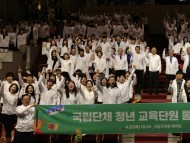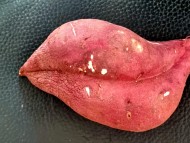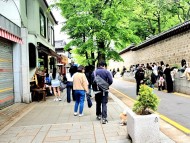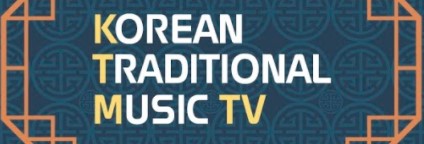2024.05.03 (금)
The National Palace Museum of Korea Presents “Butchering Knife for Ritual Offerings” as the Curator’s Choice for March
- A Knife for Sacrificing the Animals Offered at Rites at the Jongmyo Shrine to Be Presented in the Gallery and Online / Starting March 2 -
- Michael Lammbra…
- 등록 2022.03.03 10:21
- 조회수 418
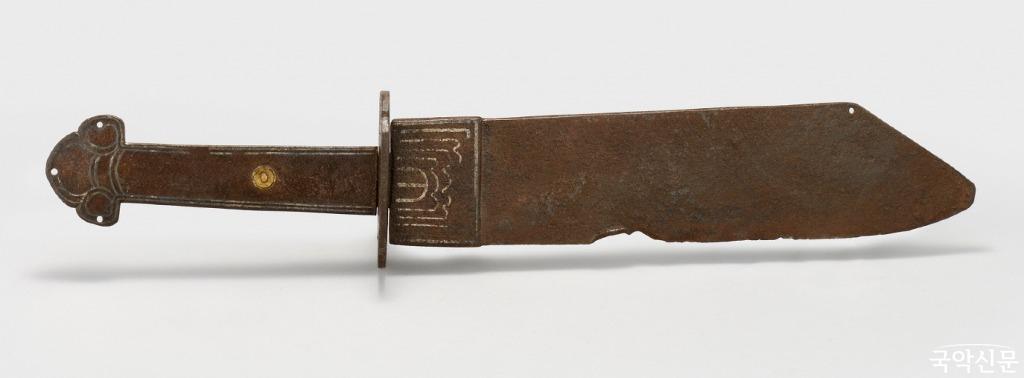
The National Palace Museum of Korea (Director: Kim In Kyu), an affiliate of the Cultural Heritage Administration of Korea, has selected the "Butchering Knife for Ritual Offerings” as its "Curator’s Choice from the Royal Treasures” for the month of March. In addition to being displayed in the Royal Rituals of the Joseon Dynasty Gallery on the basement floor of the museum, it will be presented virtually in a YouTube broadcast on the channels of the Cultural Heritage Administration and the National Palace Museum of Korea starting March 2.
* National Palace Museum of Korea YouTube: https://www.youtube.com/gogungmuseum
** Cultural Heritage Administration YouTube: https://www.youtube.com/chluvu
The Butchering Knife for Ritual Offerings is a knife that was used for sacrificingthe animals offered at the state rites performed at official venues, including the Jongmyo Shrine. This type of knife is known as a nando in Korean (the first character nan signifies ‘bell.’) Illustrations such as the Folding Screen of Illustrated Instructions for Rites Held at the Royal Ancestral Shrine indicate that sacrificial knives of this type featured three bells on their hilts and one each at the spine and tip. The two examples of this kind of knife housed at the National Palace Museum of Korea have both lost their bells, but the holes through which they were attached are clearly visible. They are made primarily of iron, but one of the knives features a design inlaid in silver on the hilt and the area connecting it to the blade.
Cows, pigs, and lambs were slaughtered for rites performed at the Jongmyo Shrine, and their fur, blood, livers, and intestinal fat were offered on a ritual table. The sacrifices presented at rituals were an important part of the rites performed at the Jongmyo Shrine, much so that the king inspected the condition of the offerings prior to the rites that he conducted. Animals were sacrificed only in accordance with strict procedures, and this butchering knife was used on such occasions. The five bells attached to the knife indicated the five notes―gung, sang, gak, chi, and wu―that were recognizedstarting in ancient times. The knife was wielded to sound the bells, and it is said that the animal was cut only when the sounds of the bells struck a harmony.
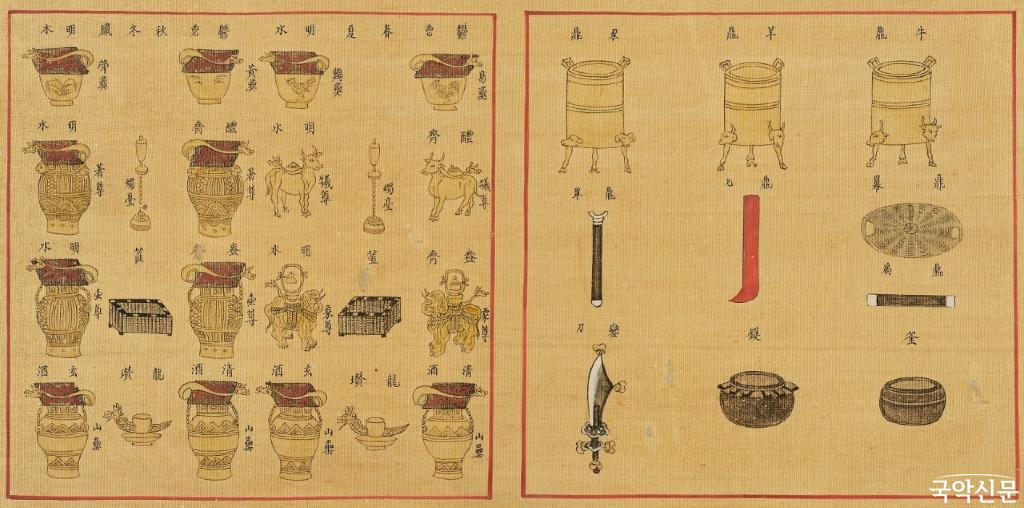
The fur and blood of the sacrificed animal were placed in a wide tray-like ritual vessel known as a mohyeolban. The liver and intestinal fat were set in a vessel known as a gannyodeung after the liver had been rinsed with a ritual liquor known as ulchang. The remaining fur and blood were placed in a clean vessel and carefully buried after the performance of the rite. The Butchering Knife for Ritual Offerings reveals the deep respect offered by descendants towards their ancestors when performing memorial rites.
Although there are no restrictions on the number of visitors allowed in the gallery, all visitors to the museum must abide by the requirements in place to reduce any potential spread of COVID-19. Those who are unable to visit the gallery in person can still enjoy this month’s Curator’s Choice virtually through a video with Korean and English subtitles available on the museum’s website (gogung.go.kr) and on the YouTube channels of the museum and of the Cultural Heritage Administration of Korea.
- [] 제6회 울진금강송 전국국악경연대회(06/08)
- [] 제29회 대통령상 한밭국악전국대회(07/06-07) (무용/기악/성악)
- [] 제8회 목담 최승희 전국국악경연대회(06/01) (판소리,기악)
- [] [서울]제28회 전국판소리경연대회(06/15-16)
- [] 제32회 대전전국국악경연대회(06/01-02)
- [] 제16회 순천 낙안읍성 전국가야금병창경연대회(05/25-26)
- [] 제18회증평국악경연대회(05/11)
- [] [군산]제32회 전국청소년민속예술경연대회(05/18)
- [] 제42회 전주대사습놀이 학생전국대회(5/18∼6/2)
- [] 제50회 전주대사습놀이 전국대회(5/18~6/3)
- [] 제20회 전국대금경연대회(06/08-09)
- [] 제4회 함양 전국국악경연대회(05/12)
- [] 제18회 대한민국 전통예술무용·연희대제전(06/09)<br>무용(전통무용…
- [] 제48회 부산동래 전국전통예술경연대회(06/15-16)(무용.기악)
- [] [부여]제1회충남전국청소년국악경연대회(05/04)(판소리.기악.타악)
- [] [광주]제21회 대한민국 가야금병창대제전(06/16)
- [] 제18회 과천전국경기소리경창대회(05/04)
- [] 제11회 곡성 통일전국종합예술대전(06/15-16)(판소리.무용, 기악,…
- [] 제24회 인천국악대제전 전국국악경연대회(05/25-26)
- [] 제26회 창원야철전국국악대전(07/06- 07)
- [] 2024 무안장애인 승달국악대제전(06/01-02)
- [] 제22회 무안전국승달국악대제전(06/01-02)
- [] 제10회 전국공주아리랑민요경창대회(05/26)
- [] 제17회 상주전국국악경연대회(05/19)(성악/무용·연희/기악)
- [] 제10회 전국밀양아리랑경창대회(05/26)
- [] 제21회 강남전국국악경연대회(05/22)(무용/타악/판소리/민요)
- [] 제26회 서편제보성소리축제 전국판소리 고수 경연대회(05/04-05)
- [] [순천]제10회 낙안읍성 전국 국악대전(04/27-28)
- [] 제29회 안산전국청소년국악경연대회(05/26)
- [] 제26회(통합58회) 여수진남전국국악경연대회(05/18-19)
- [] 제51회 대한민국 춘향국악대전 경연대회(05/05)(05/11-12)
- [] 제33회 고령전국우륵가야금경연대회(04/26-27)
- [] [부평]제8회 전국 청소년국악경연대회(05/11)(관악/현악/성악)
- [] 제22회 구례전국가야금경연대회(05/04-05)
- [완도]제24회 장보고국악대전 전국경연대회(05/05-06)(무용/판소리…
- [] 제23회 대한민국 빛고을 기악대제전(05/25-26)
- [] [인천] 제10회 계양산국악제(04/26-27) (풍물,사물, 기악,민요…
-

[수요연재] 한글서예로 읽는 우리음악 사설(191)<br>원주아리랑
원주아리랑을 쓰다. 한얼이종선 (2024, 한지에 먹, 40× 63cm) 아침에 만나면 오라버니요 밤중에 만나면 정든 님 일세...
-

[금요연재] 도자의 여로 (143) <BR> 백자철화편병편과 수물(受物)편
같은 백자가마터 출토품이라는 것도 이규진(편고재 주인) 편병은 병을 만든 후 앞과 뒤를 누르거나 두드려 면을 만든 그릇이다. 조선 전기부터 후기까지 지속적으로 만든 기...
-

[국악신문] 정창관의 ‘국악-신반’ <21>
윤하림 해금풍류 II 산조 윤하림 해금풍류 II 산조. (2024년 Sound Press 음반번호없음) 2023년 윤하림 ...
-

[국악신문 소장자료] (42)아리랑 최초 취입 아리랑, ‘1913년 京城卵卵打令’
일본 니포노폰 취입 조선민요 ‘경성란란타령’, 1913년 Nipponophone 6170 SP음반.(국악신문 소장자료) ...
-

[Pick리뷰] 경성 모던걸들의 춤판 '모던정동'…"자유 갈망하는 모습 담아"
30일 서울 중구 국립정동극장에서 열린 국립정동극장예술단 정기공연 '모던정동' 프레스콜에서 출연진이 주요 장면을 시연하고 있다. 2024.4.30 ...
-

세실풍류, 박병천의 '구음시나위'에 허튼춤 선사한 안덕기
국립정동극장이 4월 한달간 진행하는 '세실풍류 : 법고창신, 근현대춤 100년의 여정'에서 23일 박병천의 '구음시나위'에 허튼춤 추는 안덕기 (사진=국립정...
-

세실풍류, 동해별신굿 민속춤사위를 제해석한 조재혁의 '현~'
국립정동극장이 4월 한달간 진행하는 '세실풍류 : 법고창신, 근현대춤 100년의 여정' 에서 조재혁의 '현~' 공연 모습. (사진=국립정동극장). 2024....
-

[Pick리뷰] 이호연의 경기소리 숨, ‘절창 정선아리랑!’
# ‘이호연의 경기소리 숨’ 공연이 지난 4월 26일 삼성동 민속극장 ‘풍류’에서 열렸다. 20대에서 60대까지의 제자들 20명과 5명의 반주자와 함께 경기잡가, 경기민요, 강원도...
-

[PICK인터뷰] 미리 만나 보는 '제94회 남원춘향대전'
[국악신문 정수현 전문기자]=대한민국에서 가장 오래된 축제로 손꼽히는 남원춘향대전(남원춘향제)이 오는 5월 10일(금)부터 5월 16일(목)까지 7일간 남원시 광한루원 일대에서 열...
-

[Pick리뷰] 모던연희극 ‘新칠우쟁론기’
4월 18일부터 20일, 남산국악당에서 아트플랫폼 동화의 모던연희극 ‘新칠우쟁론기’가 펼쳐졌다. [국악신문 정수현 전문기자]=지...
-

[PICK인터뷰] 국립국악관현악단의 채치성 예술감독을 만나다
[국악신문 정수현 전문기자]=봄비가 촉촉이 땅을 적시는 4월, 국립국악관현악단 예술감독으로 취임한 지 6개월이 된 채치성 예술감독님을 만났다. 그는 국악방송 사장, KBS 국악관현...
-

[Pick리뷰] 이 시대의 새로운 춘향가- ‘틂:Lost&Found’
2024 쿼드초이스_틂 (사진=서울문화재단 대학로극장 쿼드 나승열) [국악신문 정수현 전문기자]=대학로극장 쿼드의 ‘쿼드초이스’...
-

[Pick리뷰] 세 악단의 조화로운 하모니, ‘하나 되어’
지난 4일, 국립국악원은 국립국악원 창작악단, KBS국악관현악단, 전북특별자치도립국악원 관현악단 118명으로 구성된 연합 관현악단 무대 ‘하나되어’를 국...
-

[인터뷰] 김경혜의 '시간의 얼굴' 작품전, 16일 개막
칠순을 넘어서는 길목에서 중견작가 김경혜(영남이공대 명예교수) 작가의 열번째 작품전이 오는 16일부터 25일까지 10일간 대구시 중구 슈바빙 갤러리에서 열린다.전시되는총 50여 개...


